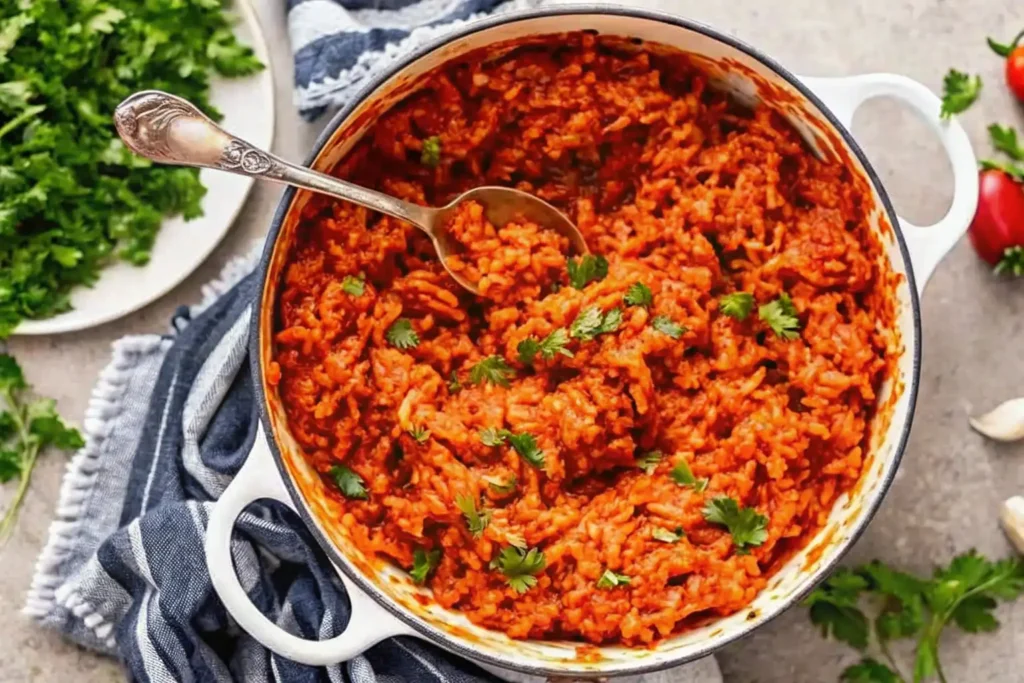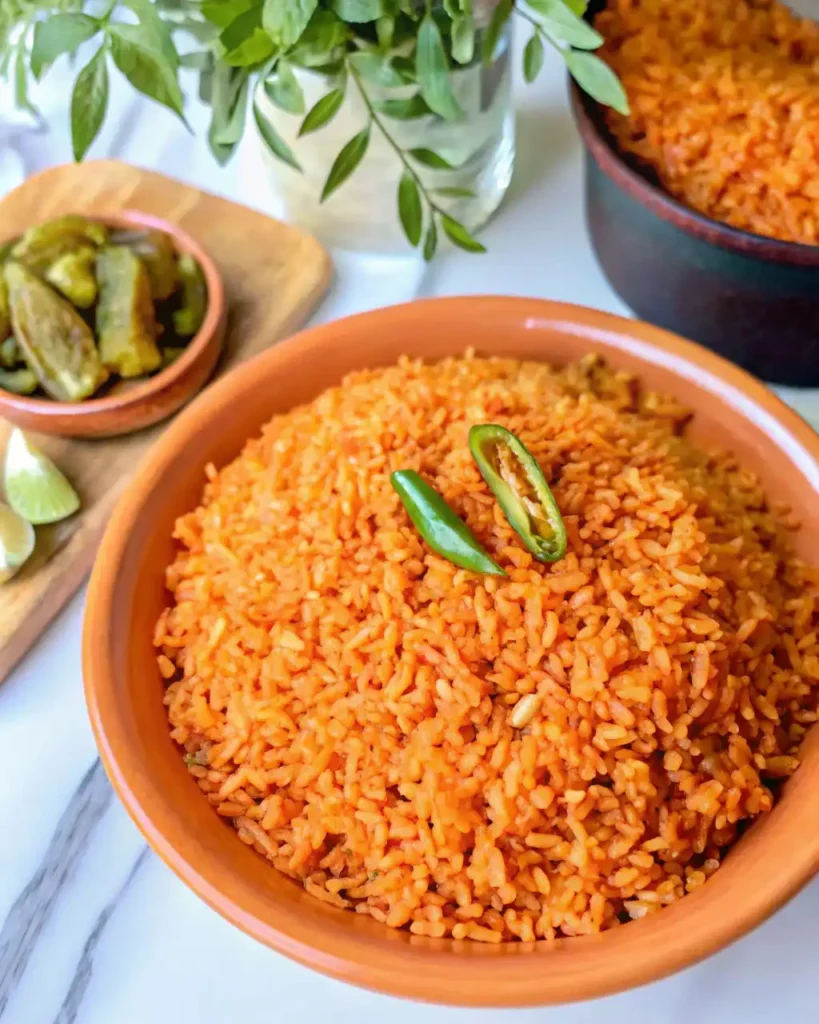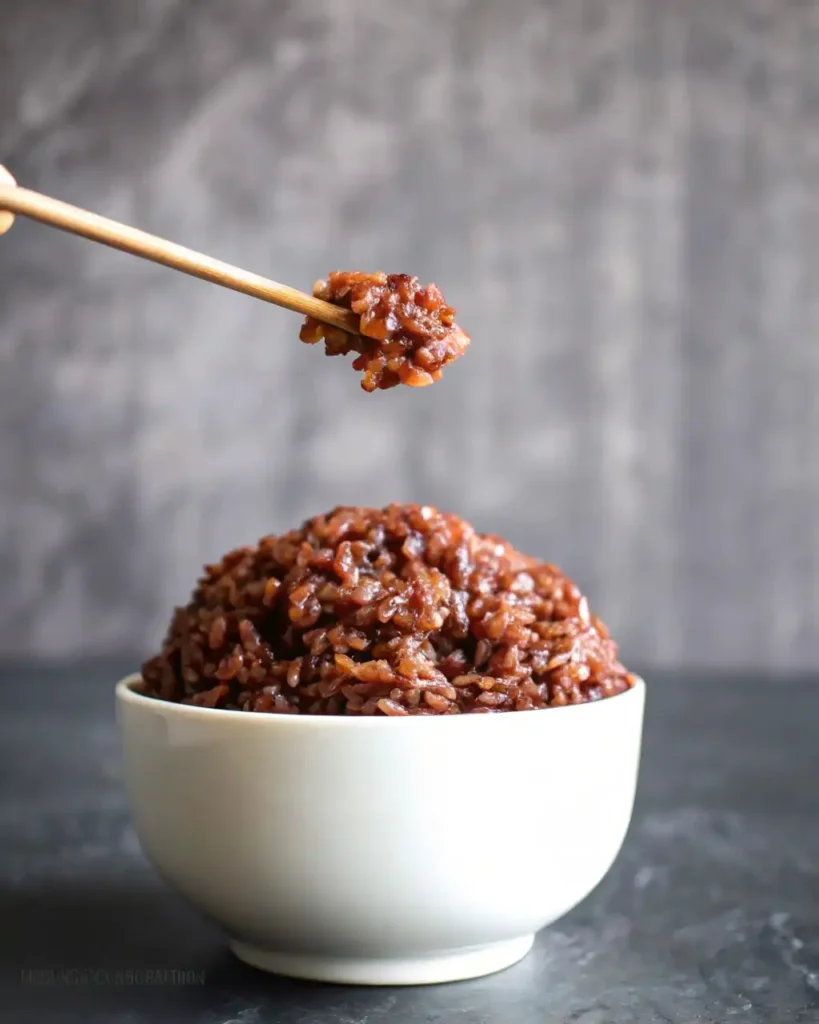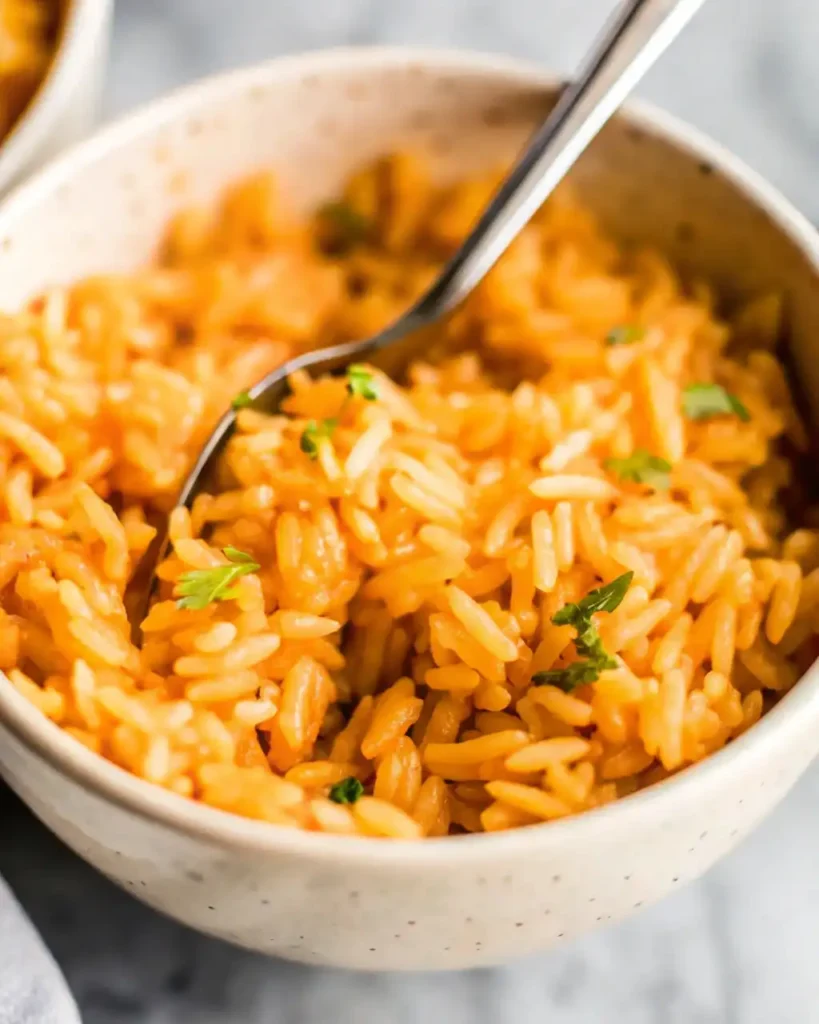The color of red rice ranges from earthy brown to brightly ruddy. The grains have nutty flavor profiles and are very nutritious. But what makes red rice red? It is due to natural pigmenting compounds, the growing conditions, and the many basic varieties of rice cultivated in different places of the world.

Besides color, red rice is high in antioxidants, fiber, and nutrients, which is why it is widely loved by consumers keen on adding more of their whole grains. Traditional or not, red rice is a promotion given not only for its vibrant color but also for its chunky flavor profile. Its red color, health benefits, and why we think it should earn a place in your pantry will be explored.
The Science Behind the Color

The deep red hue of red rice comes from anthocyanins, a type of flavonoid pigment found in many plants, including berries, grapes, and certain types of rice. Anthocyanins are responsible for red, purple, and blue shades in fruits and vegetables, and they offer strong antioxidant properties.
Unlike white rice, which has its outer layers removed, red rice retains its bran layer, where these pigments are concentrated. This means the color isn’t just for show—it’s also a sign of higher nutritional value.
The shade of red can differ based on the variety and processing method. Some red rice types have a deep maroon shade, while others lean toward a lighter reddish-brown tone. The longer the rice is left unprocessed, the richer the color and the more nutrients it retains.
Varieties of Red Rice
Red rice is grown in many localities around the world with each variety offering its unique flavor, texture, and color intensity. Some of the more common types are made known below.
1. Himalayan Red Rice
Native to Bhutan and surrounding regions, Himalayan red rice is known for its earthy, slightly nutty taste. It cooks up soft but retains a bit of chew, making it a great base for salads and grain bowls.
2. Thai Red Cargo Rice
Grown in Thailand, this variety has a deep red color and a slightly sweet flavor. It’s often used in Southeast Asian cuisine and pairs well with coconut milk-based dishes and stir-fries.
3. Camargue Red Rice
Hailing from the Camargue region of France, this rice has a medium grain and a subtle, almost floral aroma. It’s popular in Mediterranean cooking and works well in grain salads and risottos.
4. African Red Rice
Often found in West African cuisine, this variety has a firmer texture and a bolder, earthier taste. It’s commonly used in stews and savory rice dishes.
5. Wehani Rice
Developed in the United States, Wehani rice is a reddish-brown, long-grain variety with a strong nutty aroma. It’s often compared to basmati rice but has a chewier texture.
Each of these varieties gets its color from anthocyanins, though the exact shade can differ based on genetics and growing conditions.
How Growing Conditions Affect the Color

The environment where red rice is grown plays a role in how deep or vibrant its color appears. Factors like soil quality, climate, and altitude all impact the levels of anthocyanins in the rice.
- High-altitude regions tend to produce rice with a more intense red hue due to cooler temperatures and mineral-rich soil.
- Warmer, humid climates can also enhance pigmentation, as seen in Thai Red Cargo Rice.
- Organic farming methods that avoid chemical bleaching or polishing help retain the natural red color.
Since red rice keeps its outer bran layer intact, it maintains the full depth of its color, unlike white rice, which loses its pigmentation during processing.
Nutritional Benefits of Red Rice

The same compounds that give red rice its color also contribute to its health benefits. Anthocyanins act as antioxidants, which help combat oxidative stress in the body. But that’s just one reason to add red rice to your diet.
1. Rich in Antioxidants
Anthocyanins combat inflammation and shield cells from free radical damage. This can support heart health and may reduce the risk of chronic diseases.
2. High in Fiber
Since red rice is a whole grain, it contains more fiber than white rice. This supports digestion, helps maintain stable blood sugar levels, and keeps you feeling full longer.
3. Supports Heart Health
Whole grains like red rice are linked to better cardiovascular health. The fiber content helps lower cholesterol, while antioxidants support healthy blood vessels.
4. Provides Essential Minerals
Red rice is a good source of iron, zinc, and magnesium—minerals that support immune function, muscle health, and energy production.
5. Better Blood Sugar Control
The fiber and complex carbohydrates in red rice help slow digestion, preventing rapid spikes in blood sugar. This makes it a better choice than white rice for those managing blood sugar levels.
How to Cook Red Rice
Cooking red rice requires more time than white rice because of its intact bran layer, but the process is simple. Here’s how to get the best results:
- Rinse the rice – Since red rice is minimally processed, it may have some excess starch or dust from packaging. Rinse it under cold water until the water runs clear.
- Soak for better texture – Soaking red rice for an hour (or even overnight) can help soften the grains and reduce cooking time.
- Use the right water ratio – Red rice generally requires more water than white rice. A general guideline is to use 2 ½ cups of water for every cup of red rice.
- Simmer and cover – Bring the water to a boil, then reduce the heat and cover. Allow it cook for about 30 to 40 minutes until the grains are tender but still have a slight chew.
- Fluff and serve – Once done, Let the rice rest for a few minutes before fluffing with a fork.
Red rice pairs well with a variety of flavors, from spicy curries to simple roasted vegetables. Its slightly nutty taste and chewy texture make it a great alternative to white or brown rice in many dishes.
Red Rice vs. Other Whole Grains
Red rice is truly unique for its color and nutrition profile among whole grains. Compared to brown rice, red rice has a higher level of antioxidants due to anthocyanins. While quinoa and farro are lauded as protein sources, red rice stands its ground with a good balance of fiber, vitamins, and minerals. Its texture falls between white and black rice—chewier than white but softer than black—making it a great option for variety seekers.
The Role of Red Rice in Traditional Diets
Many cultures have long relied on red rice as a staple food, using it in everything from daily meals to special celebrations. In Bhutan, red rice is often served with spicy curries and vegetables, making it a key part of the country’s traditional cuisine. In parts of India and Sri Lanka, red rice is used in dosas, porridges, and even rice-based sweets. West African dishes frequently feature red rice in flavorful, tomato-based recipes similar to jambalaya. These traditions highlight how red rice has been valued for its taste, texture, and nutrition across different regions of the world.
How Red Rice Gets Its Unique Flavor
The flavor of red rice is often described as nutty, slightly earthy, and richer than white rice. This taste comes from the natural oils in the bran layer, which remain intact since the rice isn’t heavily processed. The longer red rice is stored, the deeper its flavor becomes, similar to aged grains like basmati. When cooked, red rice absorbs the flavors of herbs, spices, and sauces exceptionally well, making it an excellent base for dishes with bold seasonings. Whether paired with coconut milk, garlic, or a simple drizzle of olive oil, red rice brings a depth of taste that makes meals more satisfying.
FAQs
What Creates the Color in Red Rice?
The rich red color of red rice comes from anthocyanins, a form of natural pigment in the bran layer of the rice grain. These pigments also give red, purple, and blue colorations to many fruits and vegetables, including blueberries and red cabbage. While white rice has had its outer layers taken away, red rice still retains its bran, where the pigment is located, giving it a rich hue and added benefits in nutrition. Due to varying cultivation and varieties, red rice can differ in color, but the anthocyanins in all those cases are major contributors to the red rice’s signature appearance.
What Makes Mexican Rice Red?
The red hue of Mexican rice doesn’t arise from anthocyanins or anything like that, but rather from the ingredients used in making it. Traditionally, red rice is colored with tomatoes, which are either fresh, canned, or in sauce or paste form. Some recipes even call for particular spices, including paprika or achiote, that can enhance the color of the rice even more. So whereas red rice varieties possess red pigments by default, Mexican rice is actually white rice that takes on this color during the cooking process owing to the flavored ingredients. The end result is a lovely, bursting-with-flavor rice dish traditionally served alongside beans, meats, and some other Mexican specialties.
What Makes Red Yeast Rice Red?
Red yeast rice gets its red color from the fermentation process rather than natural pigments in the grain itself. It is made by fermenting white rice with a specific type of mold called Monascus purpureus, which produces a deep red pigment. This fermentation process also creates compounds known as monacolins, one of which—monacolin K—has been linked to cholesterol-lowering effects similar to statin drugs. Red yeast rice is often used as a dietary supplement for heart health, though it has also been a part of traditional Chinese medicine for centuries.
What Is Red Red Rice?
“Red Red Rice” can refer to different things depending on the context. In some cases, it simply describes any naturally red variety of rice, such as Himalayan red rice or Thai red cargo rice. However, in West African cuisine, “Red Red” is the name of a popular Ghanaian dish made with black-eyed peas, tomatoes, palm oil, and spices. When served with rice, the dish takes on the name “Red Red Rice” due to the reddish tint from the tomato-based sauce and palm oil. This flavorful, protein-rich meal is a staple in Ghana and other parts of West Africa.
final thought: What makes red rice red?
Aside from its striking color and nutritional benefits, red rice adds depth and texture to meals in a way that white rice just can’t match. It’s versatile enough to be used in soups, salads, grain bowls, and even as a base for stir-fries.
For those looking to add more whole grains to their diet without giving up on taste and texture, red rice is a great choice. It brings natural color to the plate, supports overall health, and works with both traditional and modern recipes.
Next time you’re stocking up on grains, consider swapping out your usual rice for red rice. It’s an easy way to bring more flavor, color, and nutrition to your meals.



1 thought on “What makes red rice red?”